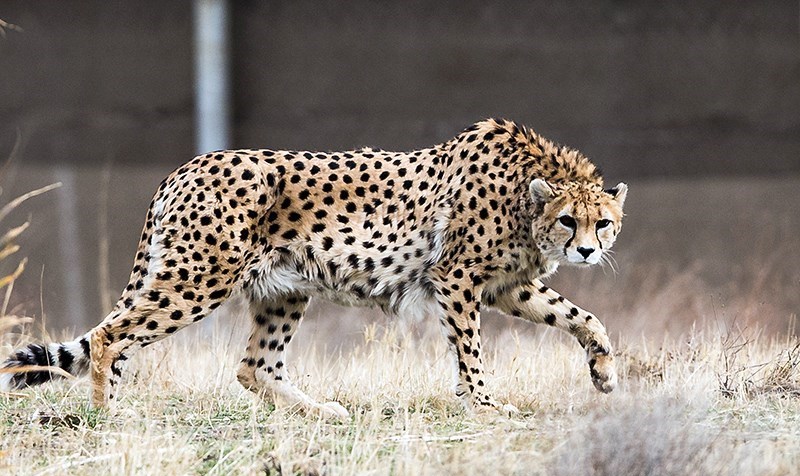
Cheetah project has not failed, fence their habitat: South African expert

South African wildlife expert Vincent van der Merwe wants cheetah habitats in India fenced to circumscribe the overall threat to the big cats recently introduced in the country.
This will also prevent their “extreme ranging behaviour” and protect the prey base from anthropogenic pressures such as poaching, he told PTI in an interview.
Van der Merwe warned that the cheetah project was going to see even higher mortality in the next few months when cheetahs try to establish territories and come face to face with leopards and tigers at the Kuno National Park in Madhya Pradesh.
His warning came as the sanctuary lost two more cheetah cubs on Thursday (May 25), affecting the government’s desire to repopulate cheetahs in India.
“Very unfortunate, but not unusual for first-time mothers to lose their first litter,” the South African said.
Watch: Multi-speciality hospital for cheetahs
Admit failure
Van der Merwe, who is closely involved with the project, said experts did not expect males to kill a South African female cheetah during courtship and “they take full responsibility for this”.
“There has never been a successful reintroduction (of cheetahs) into an unfenced reserve in recorded history. It has been attempted 15 times in Africa and it failed every time,” he said.
“We are not advocating that India must fence all of its cheetah reserves, we are saying that just fence two or three and create source reserves to top up sink reserves.”
Fencing is done to mitigate human-wildlife conflict and pressures of predation or poaching on endangered species.
Different habitats
Source reserves are habitats that provide optimal conditions for the population growth and reproduction of a particular species.
These areas have abundant resources, suitable habitats and favourable environmental conditions. They can support self-sustaining populations that produce a surplus of individuals, which can then disperse to other areas.
Sink reserves, on the other hand, are habitats that have limited resources or environmental conditions that are less favourable for the survival or reproduction of a species.
Sink reserves are reliant on dispersing individuals from source reserves to maintain their population numbers.
Several experts have expressed concerns over the lack of space and logistical support at Kuno Park and want cheetahs moved to other sanctuaries.
Van der Merwe, manager of the Cheetah Metapopulation Project in South Africa, said the best way forward right now would be to get at least three or four cheetahs to Mukundra Hills in Rajasthan, and let them breed up there.
Also read: Five more cheetahs to be released into wild in MP’s Kuno National Park before monsoon
Mukundara Hills
“Mukundra Hills is fully fenced. We know that cheetahs will do very well there. The only problem is that it is not fully stocked at the moment. So, you’ll have to bring in some black buck and chinkara. And when the fencing is completed at Nauradehi and Gandhisagar, we will have three fenced reserves and then we are absolutely winning,” he said.
The conservationist presaged more cheetah deaths outside of the fenced enclosures in the next few months.
“That’s where the real dangers lie. That’s where you can expect mortality due to hunting injury. The cheetahs, of course, will continue to establish territories and fight with each other and kill each other for territories and for access to females. They’re going to encounter leopards. There are now tigers moving around in Kuno. The worst mortalities are still to come,” he said.
“There seems to be a frenzy in India, we’ve lost four cheetahs and the project is failing. That is not true. Cheetahs naturally have high mortality rates. And we observed these same mortality rates in Africa when we reintroduced them into unfenced systems,” he said.
Under the ambitious cheetah reintroduction programme, Prime Minister Narendra Modi released the first batch of eight spotted felines from Namibia into a quarantine enclosure at Kuno in September last year.
In a second such translocation, 12 cheetahs were flown in from South Africa and released into Kuno on February 18.
(With agency inputs)


